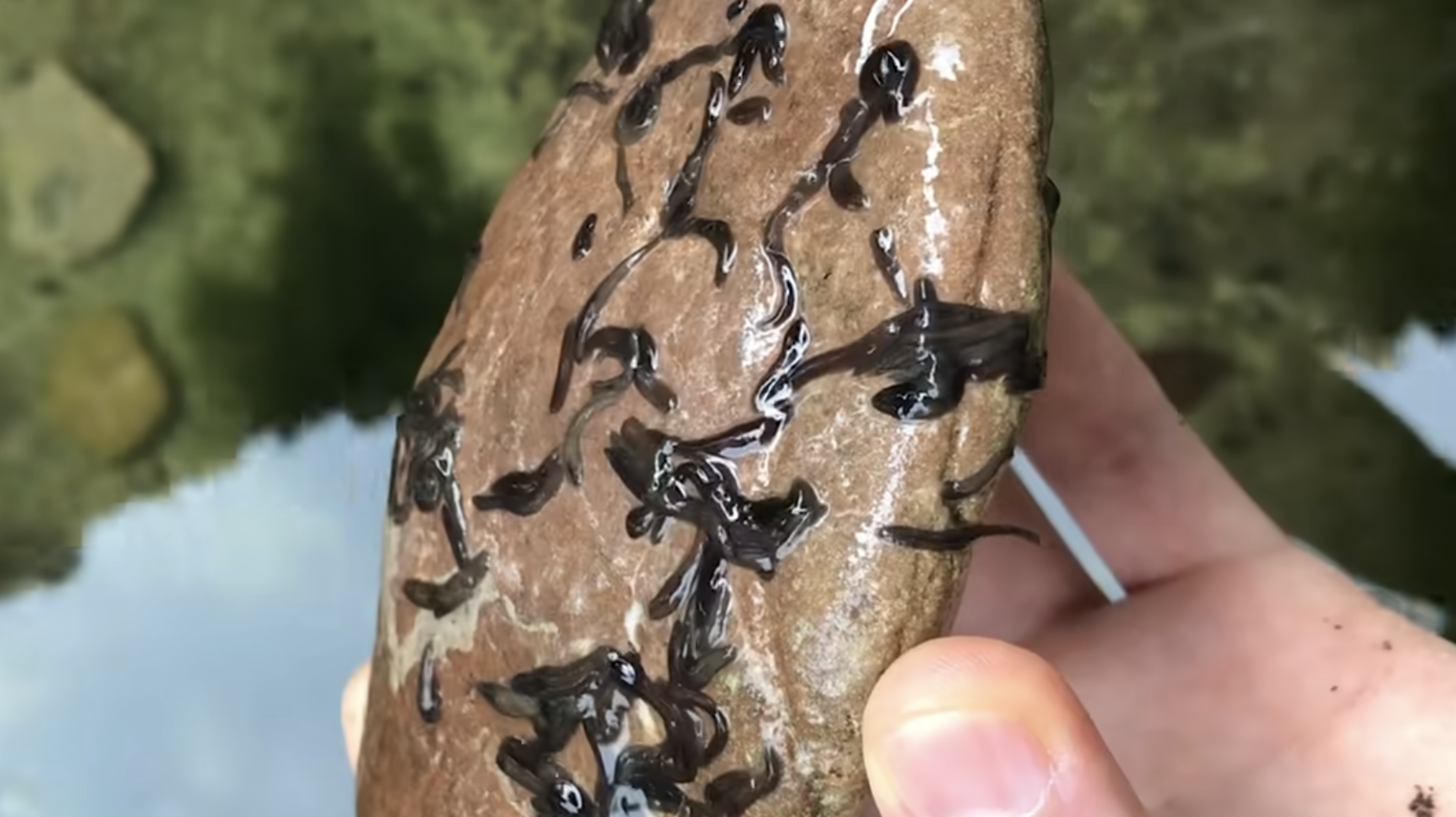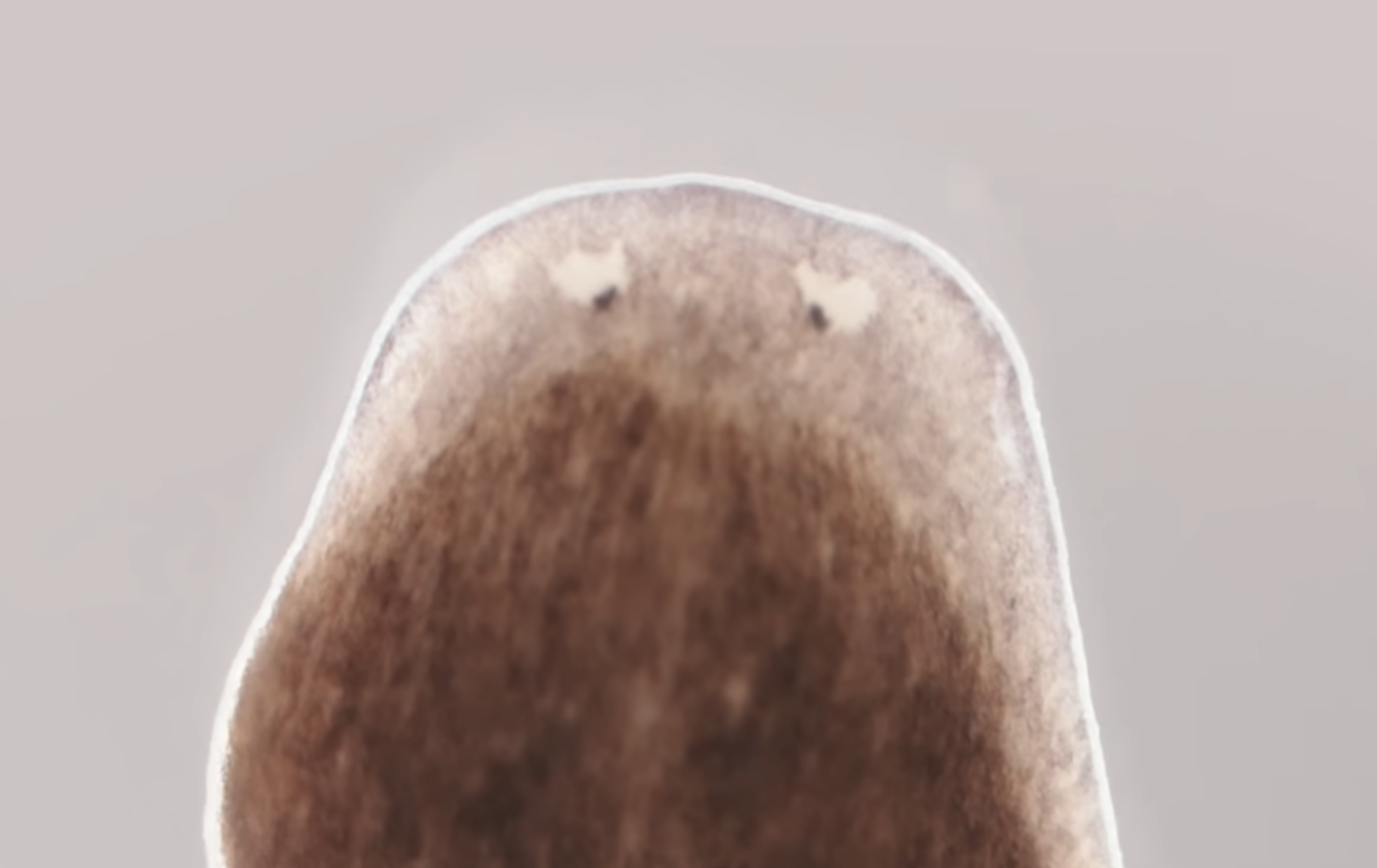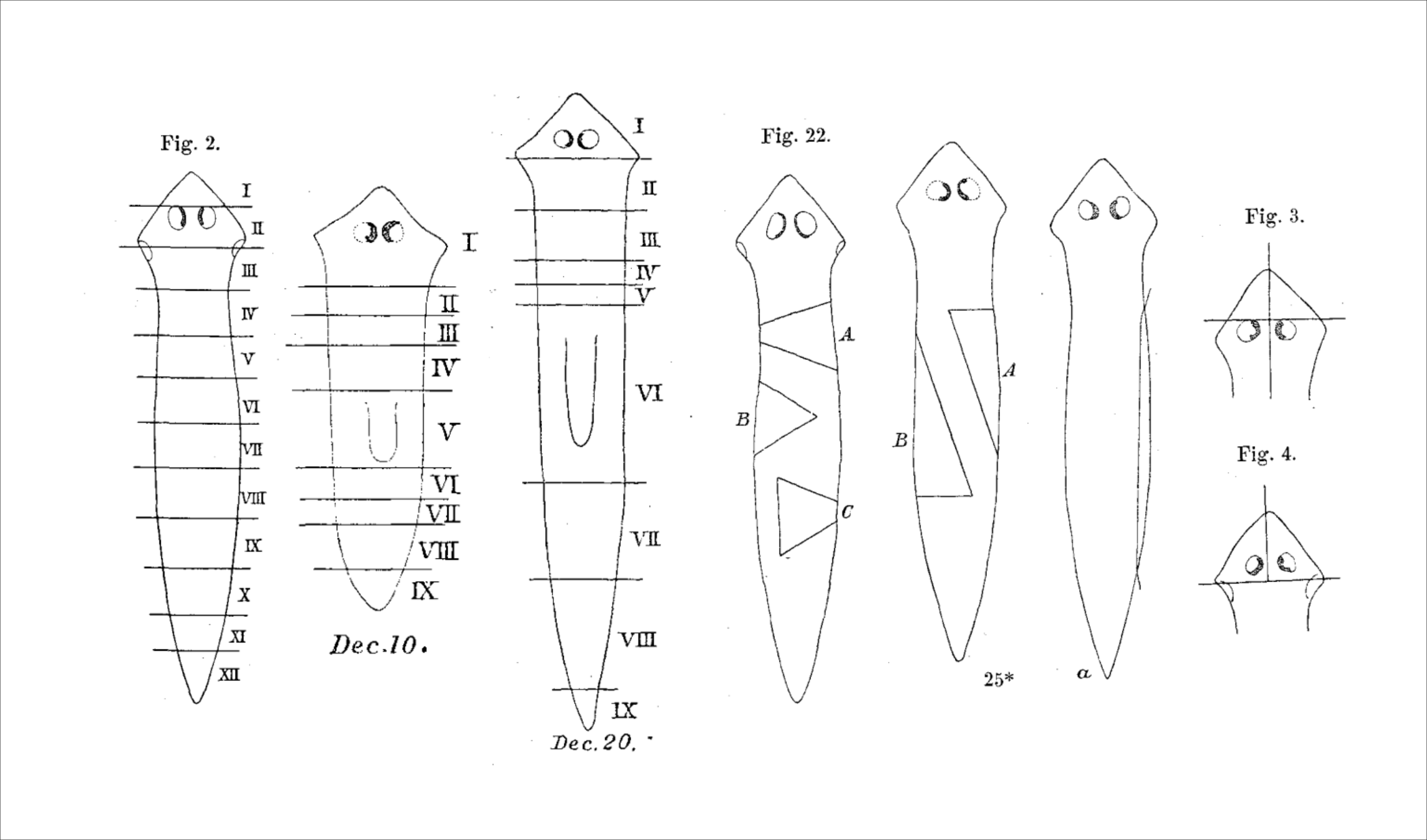I finally took the time to transfer an online game I created five years ago from an old personal website to this one.
The game is called Planar War. It is a multiplayer arcade game played the old-fashioned way, with different players controlling different keys on the same keyboard. Click here to play!
Doing this transfer reminded me of the existence of planarians flatworms and reignited my curiosity about them. Before we get to the intriguing part, let’s start with the basics.
You may have stumbled upon planarians at some point, perhaps in one of those “top 10 incredible facts of the animal kingdom” lists.
To refresh your memory, here’s what they look like on a rock: small, unimpressive micro slugs.

… with a cute, goofy head.

Their superpower is that you can cut them in half, wait for two weeks, and the two pieces will grow into fully functioning worms. The tail part grows a functioning head, while the head part grows a functioning tail. Even a slice as thin as 1/279th of a worm is enough to grow a full body, if we trust Thomas Hunt Morgan’s thorough description of creative planarian choppings from 1898.

This ability, combined with the fact that they are easy to raise in lab conditions, has allowed Schmidtea mediterranea to enter the exclusive circle of model organism rock stars, alongside the fruit fly, the C. elegans nematode, and the zebrafish.
Research labs focused on longevity, regeneration, and self-organizing intelligence have scrutinized all aspects of this worm for the past decades. And they got bangs for their bucks. Here is a short list of remarkable facts about these animals:
- Their regenerative abilities come from the fact that their bodies are made up of 20% pluripotent stem cells, which can differentiate into any type of cell, similar to the cells that human embryos are made of. In fact, a single one of these cells placed into an irradiated dead worm is enough to regrow a full body.
- To power regeneration, they maintain a higher-than-usual concentration of nutrients stored in their gut compared to similar non-regenerative worm species. During regrowth, they move around their existing cells to form the new body shape, and for extra energy, they also digest their own cells.
- The tip of their chromosome, the telomere, doesn’t get damaged through cell replication. This means they are not subject to senescence and could theoretically live forever in good condition. This is what got the longevity labs excited.
- They maintain at all times a body map of chemical gradients that can guide the regrowth towards an adult worm shape. In fact, this body map is electro-chemical. Michael Levin’s research lab showed that you can block ion channels that mediate electrical signals for 48 hours during regeneration to flip the shape of the regrown part from tail to head, leading to a two-headed worm. If you keep cutting the worm, you continuously get two-headed worms. Congratulations, you have just created a stable bio-electrochemical pattern that can propagate across time and individual organisms independently of the genome!
- Finally, they shattered our classic understanding of how memory is stored in biological organisms. If you train a worm to overcome its natural fear of light and open areas through positive reinforcement, and then slice it up, the regrown worms will learn the same behavior significantly faster than control worms. Even the tail part that grew a new brain from scratch retains traces of the previous training.
These are great shinny facts, but when I reread the Wikipedia page, I was left wondering why in the first place, planarians developed this regenerative ability?
Most common examples of regenerative abilities, like the tail of the lizard or the limbs of salamanders, are clear adaptations to repair wounds caused by predators. But these are 1 cm long worms; what kind of predator has a mouth small enough to bite them in half?
It turns out that regeneration likely comes from a reproductive strategy, not an adaptation against predators. In their natural environment, worms naturally split as a means of asexual reproduction. They stick their tail to the environment and contract their body until the middle rips apart. This is called fissiparous reproduction.
Not all planarians have regenerative abilities; some have it partially (only regrowing when cut in a certain position), and some not at all. These non-regrowing worms reproduce sexually, much like snails: they are hermaphroditic and lay eggs. They almost exclusively live in stable environments like large lakes or oceans.
In contrast, fissiparous worms live in chaotic environments like creeks, where living niches can be created and destroyed very quickly. Being able to start a new population from splitting one individual is advantageous for adapting quickly to the changing scene, even if it trades off against the lack of genetic diversity that comes with asexual reproduction.
So the short answer is: regenerative abilities come from planarians developing fissiparous reproduction as a means of asexual reproduction to adapt to rapidly changing environments.
As always in biology, this brings more questions than answers. First, why reproduce this way? Asexual reproduction can occur in dozens of ways, without the need to maintain an army of pluripotent cells at all times.
Also, why is the regeneration so robust? Couldn’t the worm just split in half to reproduce? Why does regeneration generalize to work with much smaller pieces?
And some deeper questions: Does this method of reproduction mean some traits can be passed down through generations (like the double-head trait), without the need for genetic mutation? Can selection and evolution be at play regarding such traits?
These last questions are the bread and butter of Michael Levin’s research team, which is, in my opinion, one of the most important research programs in biology today!
And we should keep looking in direction of these little goofy eyes. As he said in an interview with Lex Fridman, “Planaria hold the answer to pretty much all deep questions of life.”
Want to hear when I post something new?